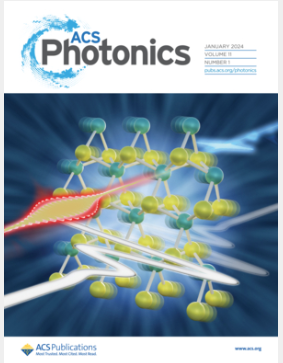Nonlinear Topological Photonics: Capturing Nonlinear Dynamics and Optical Thermodynamics
IF 6.7
1区 物理与天体物理
Q1 MATERIALS SCIENCE, MULTIDISCIPLINARY
引用次数: 0
Abstract
Combining multiple optical resonators or engineering dispersion of complex media has provided an effective method for demonstrating topological physics controlling photons in unprecedented ways such as unidirectional light propagation and spatially localized modes between an interface or on a corner. Further, adding nonlinear responses to those topological photonic systems has enabled achieving diverse phases of photons in both space and time, allowing for more functionalities in photonic devices that provide a new playground for studying dynamic features of nonlinear topological systems. However, most methods for describing nonlinear topological photonic systems rely on linear topological theories, making it challenging to accurately characterize the topology of nonlinear systems. Thus, substantial efforts have focused on rigorously describing nonlinear topological phases and developing effective tools to analyze nonlinear topological effects. Meanwhile, coupled multimode optical waveguides with nonlinear dynamic responses provide an excellent platform for the statistical description of photons, opening a new paradigm called “optical thermodynamics”. This review will introduce the basic concepts of nonlinear topological photonics and the recent development of theoretical approaches focusing on data-driven approaches for creating phase diagrams as well as the spectral localizer framework and the pseudospectrum method for understanding optical nonlinearities in topological systems. In addition, the new concept of optical thermodynamics will be introduced with some recent theoretical works.

非线性拓扑光子学:捕捉非线性动力学与光学热力学
结合多个光学谐振器或复杂介质的工程色散为展示拓扑物理以前所未有的方式控制光子提供了有效的方法,例如单向光传播和界面或角落之间的空间局域模式。此外,将非线性响应添加到这些拓扑光子系统中,可以实现光子在空间和时间上的不同相位,从而允许光子器件具有更多功能,为研究非线性拓扑系统的动态特征提供了新的平台。然而,大多数描述非线性拓扑光子系统的方法依赖于线性拓扑理论,这使得准确表征非线性系统的拓扑具有挑战性。因此,大量的工作集中在严格描述非线性拓扑阶段和开发有效的工具来分析非线性拓扑效应。同时,具有非线性动态响应的耦合多模光波导为光子的统计描述提供了一个很好的平台,开辟了一个新的范式,称为“光学热力学”。本文将介绍非线性拓扑光子学的基本概念和最近的理论方法的发展,重点是数据驱动的方法来创建相图,以及光谱定位器框架和伪光谱方法来理解拓扑系统中的光学非线性。此外,还将介绍光学热力学的新概念和一些最新的理论工作。
本文章由计算机程序翻译,如有差异,请以英文原文为准。
求助全文
约1分钟内获得全文
求助全文
来源期刊

ACS Photonics
NANOSCIENCE & NANOTECHNOLOGY-MATERIALS SCIENCE, MULTIDISCIPLINARY
CiteScore
11.90
自引率
5.70%
发文量
438
审稿时长
2.3 months
期刊介绍:
Published as soon as accepted and summarized in monthly issues, ACS Photonics will publish Research Articles, Letters, Perspectives, and Reviews, to encompass the full scope of published research in this field.
 求助内容:
求助内容: 应助结果提醒方式:
应助结果提醒方式:


